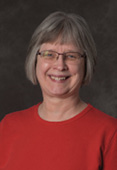Foreword
 The year was 1958, and MSU had just undertaken its first major collaboration with African partners. A man named Nnamdi Azikiwe, who would later become Nigeria's first president, had been working to establish a new national university for Nigeria. MSU president John Hannah was a close friend of Azikiwe and a big believer in the land-grant model, which he thought would fit Nigeria's educational and developmental requirements very well.
The year was 1958, and MSU had just undertaken its first major collaboration with African partners. A man named Nnamdi Azikiwe, who would later become Nigeria's first president, had been working to establish a new national university for Nigeria. MSU president John Hannah was a close friend of Azikiwe and a big believer in the land-grant model, which he thought would fit Nigeria's educational and developmental requirements very well.
Azikiwe invited a core group of Nigerian leaders to meet with scholars from the U.K. and the U.S., including Hannah, about the challenges facing Nigeria and how a land-grant university might address them. Two years later, in 1960, the University of Nigeria—Nsukka opened its doors. With funding from what is now the Agency for International Development, MSU was there to assist at every step of the way, from curriculum development to organizational structure—a project that lasted nine years.
John Hannah is generally credited with transforming Michigan State College into a research university with a strong international presence—and a special place in its heart for Africa. Half a century later this legacy persists:
- More than 200 MSU faculty and staff are engaged in research, teaching, and development cooperation in more than 20 African countries.
- MSU has more education abroad programs in Africa than any other U.S. university for both graduate and undergraduate students, and more than 300 students from Africa were studying at MSU in spring 2018.
- Every college, from Agriculture and Natural Resources to Veterinary Medicine, has an Africa-focused department, program, major, study-abroad opportunity, or research area.
- The African history graduate program in the College of Social Science is ranked No. 1 nationally by U.S. News & World Report.
Welcome to the Year of Global Africa at Michigan State University!
- Written by Linda Chapel Jackson, University Outreach and Engagement